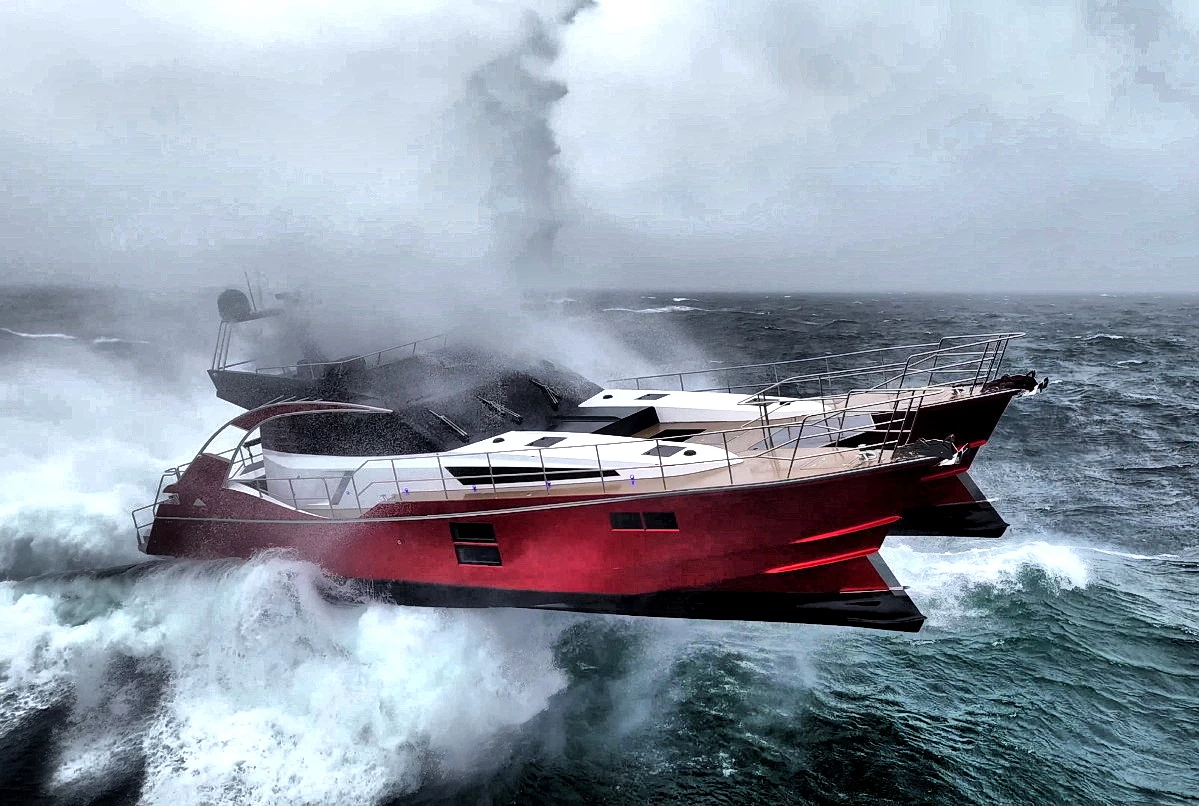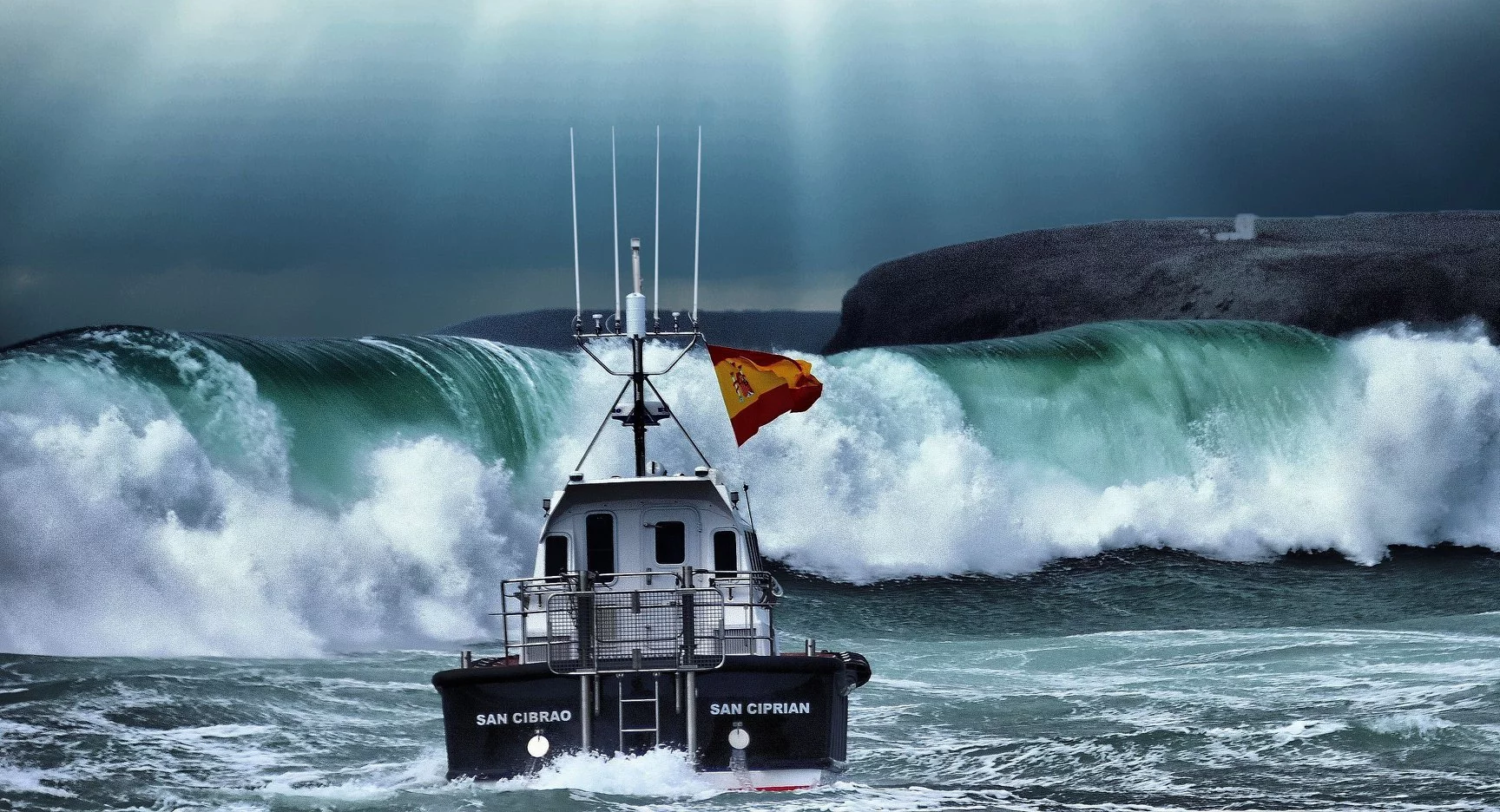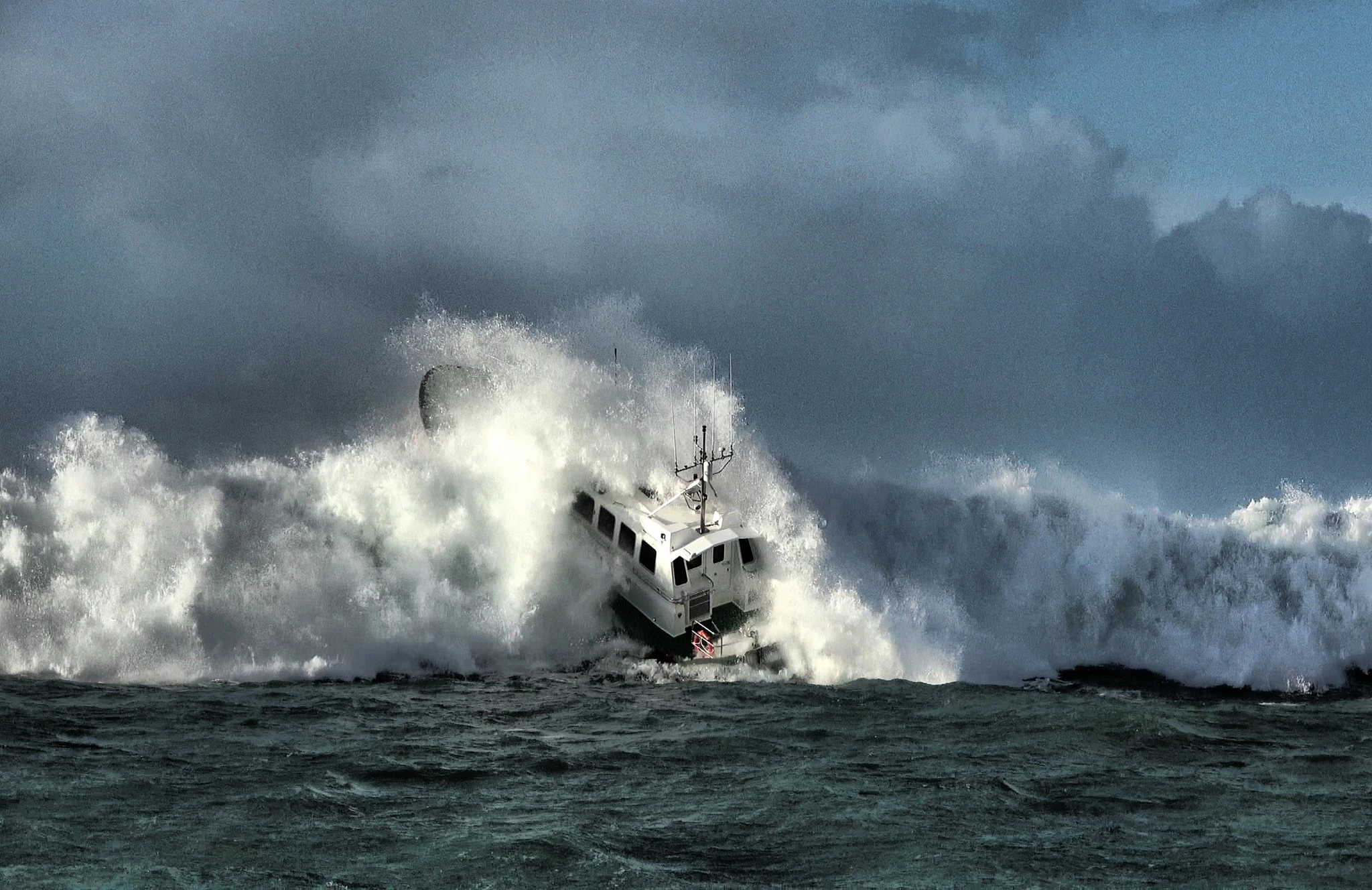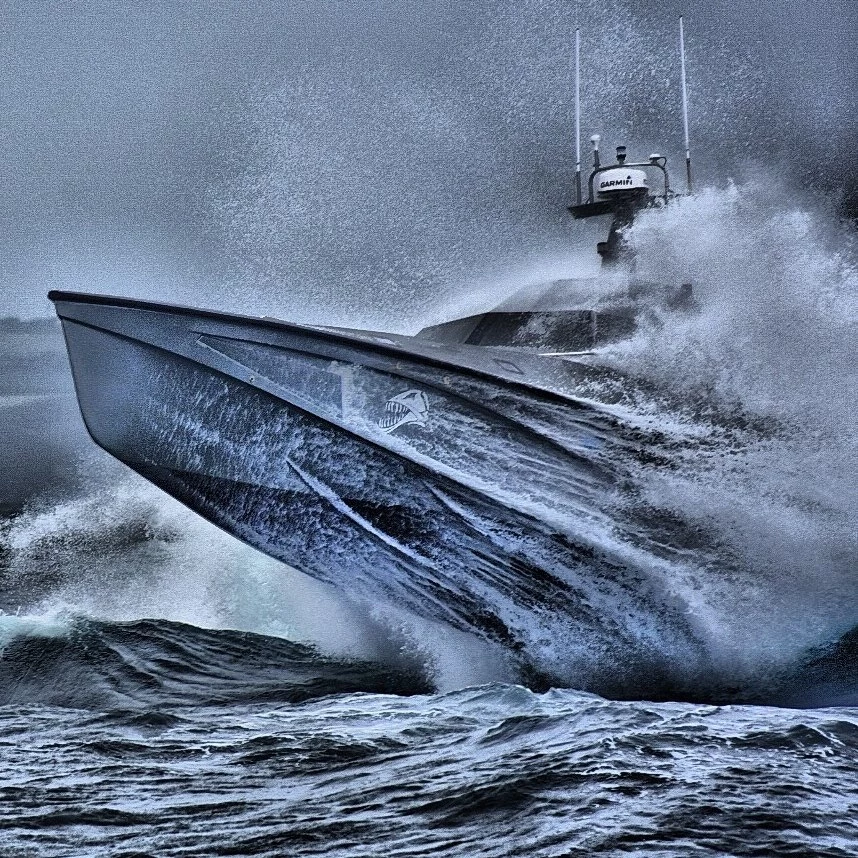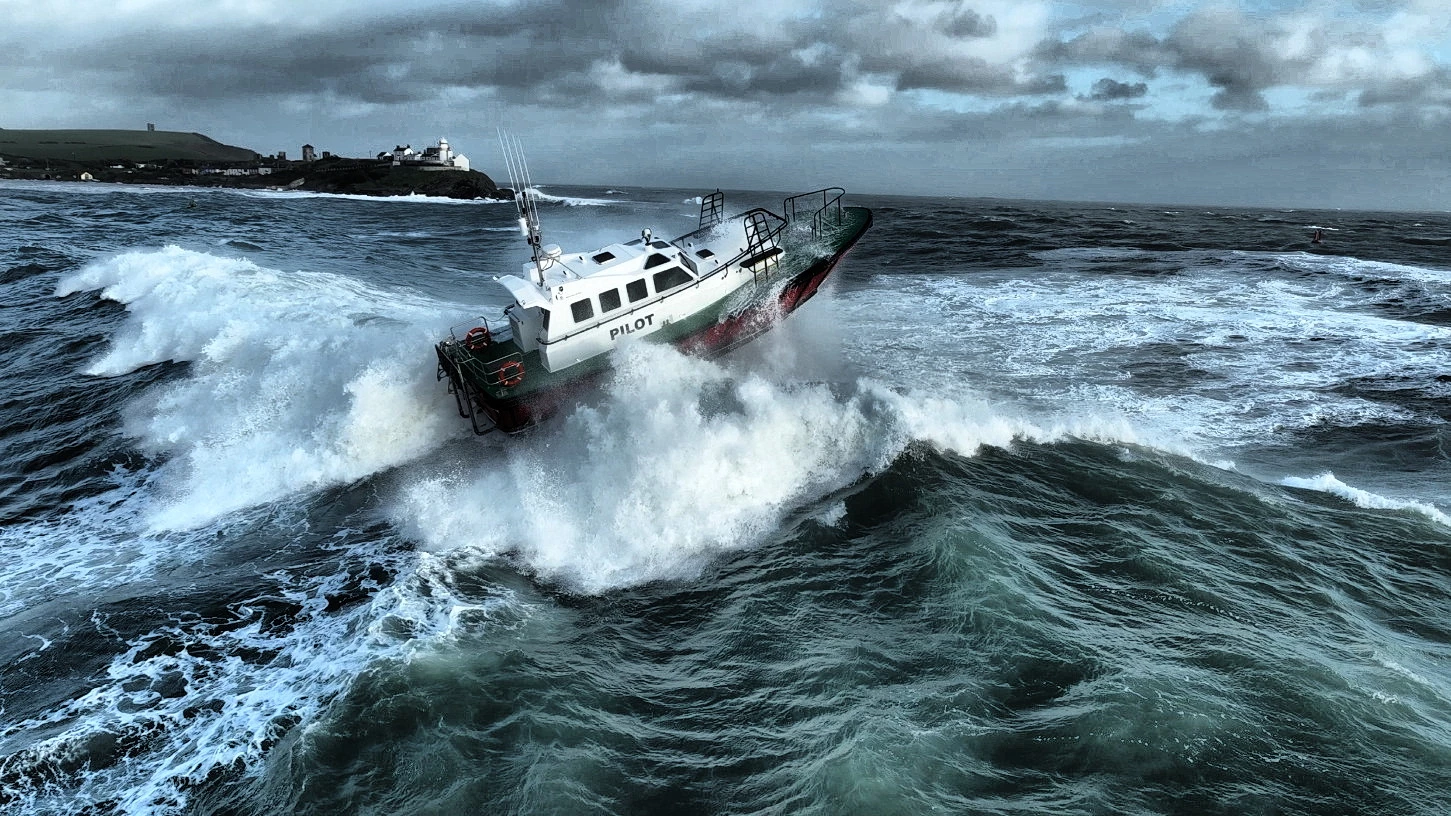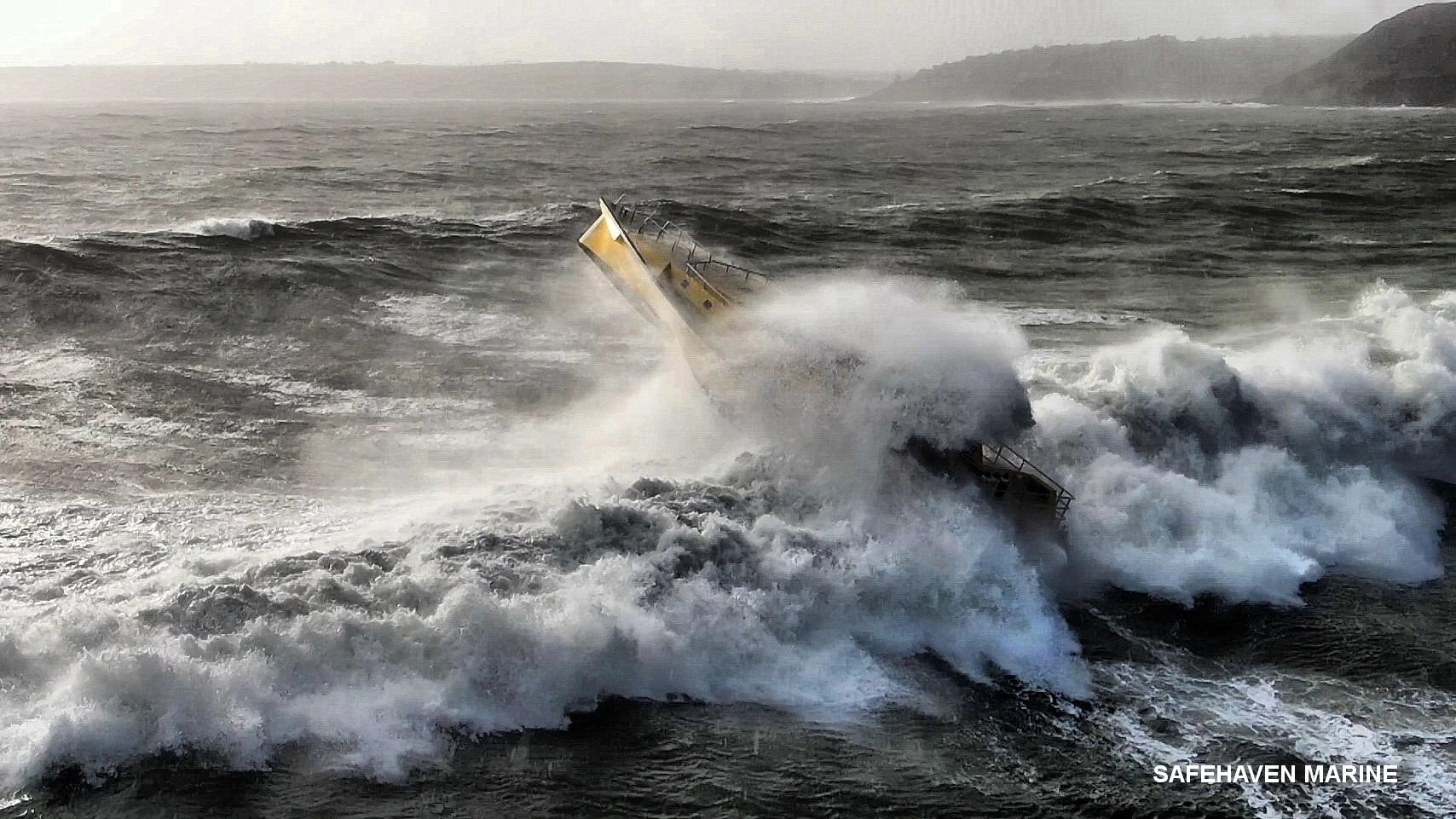Ireland's Safehaven Marine builds search and rescue craft, patrol boats and pilot boats designed to operate in "all weather" – up to and including Force 10 storms with waves up to 23 ft (7 m) high. The firm backs this up with some spectacular testing.
The company sees rough sea testing as a critical pre-delivery step, and often takes customers along for the ride; "it's better," writes Managing Director Frank Kowalski, "if crews don't have to face these kinds of conditions for the first time alone" – and throwing these huge machines into seriously dangerous waves is the only real way to provoke the kinds of failures and leaks they're checking for in the pre-delivery stage.
So, out they head into the treacherous entrance to Cork Harbour – the world's second-largest natural harbor behind Sydney, and incidentally, the last stop before the big one for one RMS Titanic back in 1912. The entrance, writes Kowalski, "can produce some pretty extreme sea states during the winter storm months," while being conveniently close to Safehaven HQ.
"Over the past 20 years," writes Kowalski, "I've probably been out 100 times in weather conditions of Force 9 and above and waves over 5 m (16 ft), so have a pretty good understanding of, and respect for, the sea state and conditions that can exist at the entrance to the Harbour, and of course the limits of my designs."
Safehaven often takes out a second all-weather boat for these tests, to operate both as a safety boat and as a camera boat – and in recent years it's started taking drones out to capture the tests from above. "Good equipment is key," writes Kowalski, "although the attrition rate can be high and we lose at least one camera a year."
The red twin-hull catamaran in the images and video above is Safehaven's new T-2000 Voyager, a 20-m (66-ft), long-range, high-performance, semi-wave piercing explorer boat capable of speeds over 50 knots (58 mph, 93 km/h).
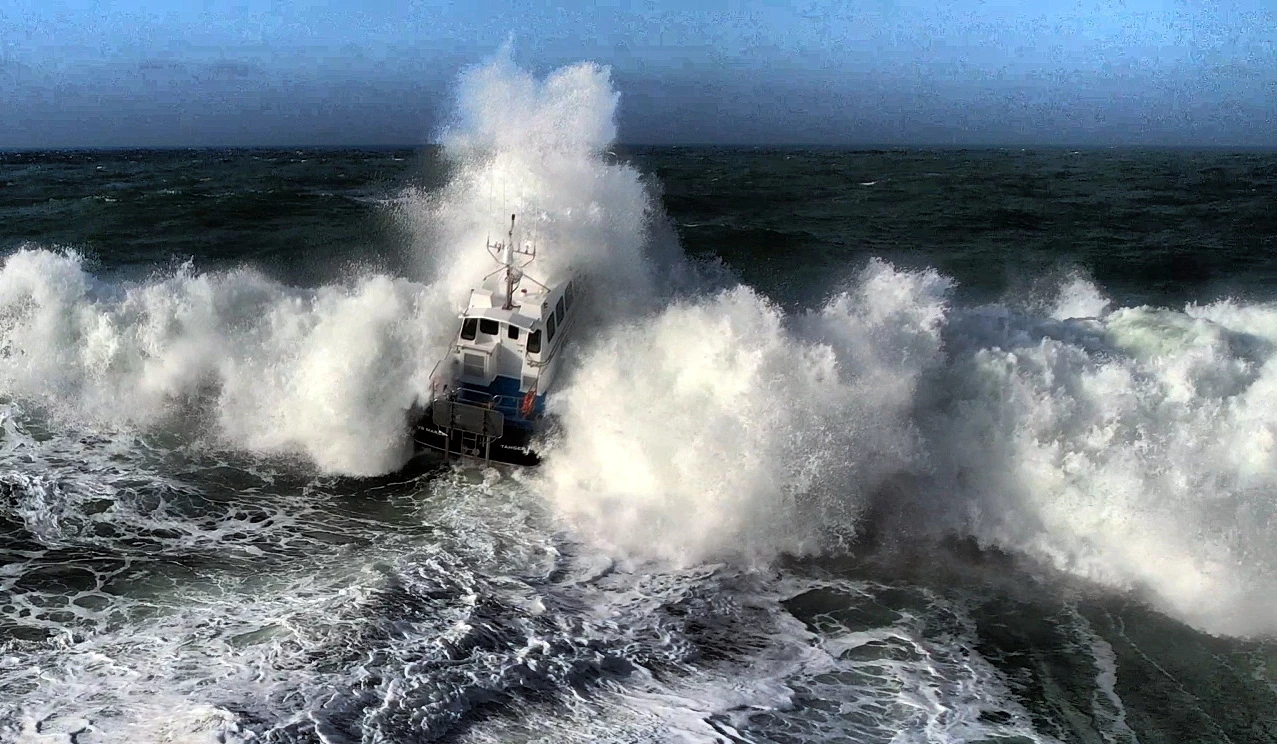
A hydrofoil can be optioned, which lifts much of the hull out of the water, boosting fuel economy by around 25%, increasing range to 1,000 nautical miles (1,151 miles, 1,852 km), and "significantly" increasing the maximum speed.
It might look like a kid's bath toy in the storm tests, but this is not a small vessel. It weighs some 40 metric tonnes fully loaded – all of which comes crashing back down into the water after smashing into a big wave. Perhaps seeing this shot with some people on board will put things in context.

Either way, this kind of work produces some absolutely spectacular images. Check out this 'greatest hits' style video from Safehaven's decades of storm-condition testing:
It sure looks like an absolutely epic experience to go through, although not one I'd be putting my hand up for personally – and I'm sure owners are delighted to receive some of these images with the boats. Jump into the gallery or click on the image below to check out some of our favorites!

Source: Safehaven Marine



